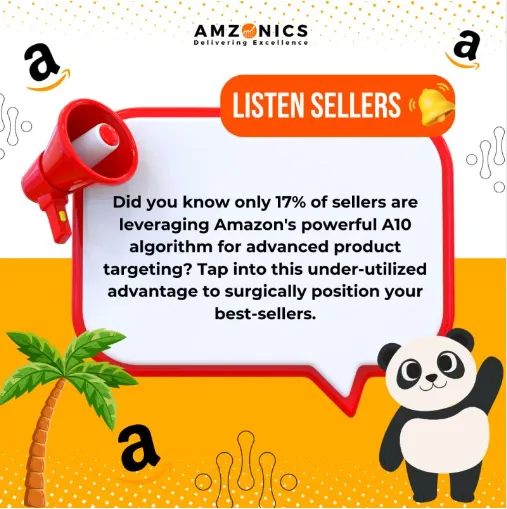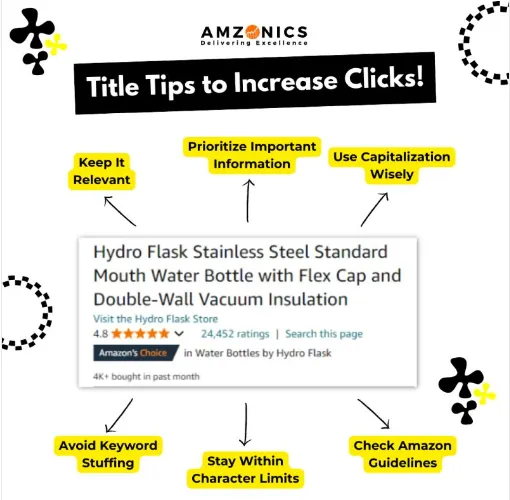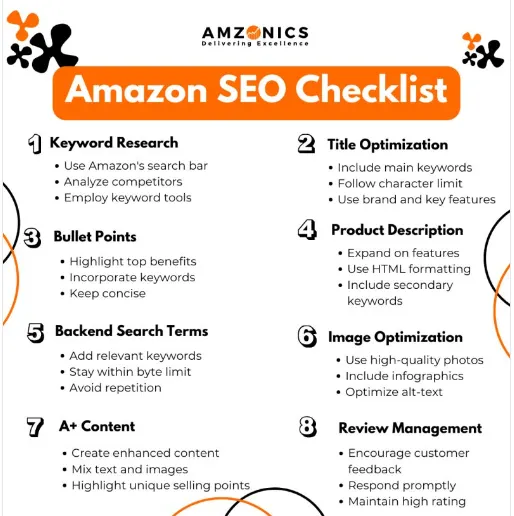Cracking Amazon's A10 Algorithm: Advanced SEO Strategies for 2024 Success
Introduction:
The evolution of Amazon’s search algorithm has shifted the way sellers approach SEO. With the introduction of the A10 Algorithm, the game is no longer just about sales and conversions—relevance, external traffic, and customer satisfaction now play pivotal roles in ranking. In this comprehensive guide, we will dive deep into advanced strategies for optimizing your listings to rank higher under Amazon’s A10 algorithm. Backed by data and cutting-edge techniques, this article will arm you with the tools needed to stay competitive.
- What’s New in the A10 Algorithm?
The A10 Algorithm is a shift from Amazon’s former A9 system, where sales velocity ruled. A10 brings several changes that sellers need to leverage:
Increased Importance of External Traffic: Amazon now rewards listings that bring in traffic from sources like social media, Google ads, and blogs.
Focus on Keyword Relevance Over Sales Velocity: A10 places more weight on how well your listings match customer search queries. This means your keyword strategy is more important than ever.
Customer Satisfaction Metrics: A10 tracks metrics like dwell time, repeat purchases, and conversion rates—indicators of customer satisfaction.
Brand Reputation and Authority: Establishing a strong, reputable brand is now rewarded in ranking, making brand-building a crucial factor.

2. Advanced Keyword Research for A10: Targeting Niche and Long-Tail Keywords
a. Long-Tail Keywords Drive High-Intent Traffic Under A10, long-tail keywords have become more valuable as Amazon now focuses on relevance. These keywords are highly specific and often used by customers closer to making a purchase.
Example: Instead of targeting a competitive term like "laptop," focus on long-tail variants like “ultra-lightweight 13-inch laptop for travel.” Such niche keywords can increase your conversion rate and bring in qualified traffic.
Data Insight: In 2023, products optimized for long-tail keywords saw a 34% higher conversion rate than those targeting broad keywords.
b. Tools to Master Long-Tail Keywords Utilize tools like Helium 10, Jungle Scout, or MerchantWords to identify long-tail opportunities. These tools help you find specific, underserved niches where competition is lower, but demand is high.
3. Using External Traffic: A New Key to Amazon SEO Success
a. Why External Traffic Matters Under A10 A significant shift with A10 is its emphasis on external traffic sources. Amazon rewards sellers who bring in customers from outside Amazon’s ecosystem.
This includes traffic from:
Google Ads, Social Media Marketing (Facebook, Instagram, Pinterest)Influencer Collaborations and Blogs
Advanced Tip: By using Amazon Attribution, you can track the performance of your external traffic and optimize your strategy based on which channels bring the most qualified buyers. Products that consistently generate external traffic experience improved rankings over time.
b. Actionable Strategy: Google Ads for Amazon Products Invest in Google Shopping Ads to target high-intent buyers searching for your products outside of Amazon. In fact, data shows that sellers who combine Google ads with Amazon SEO saw a 21% lift in organic rankings.
4. Optimizing Backend Search Terms for A10
a. Maximizing Your Backend Search Fields Amazon allows sellers to add up to 250 bytes of backend search terms. Many sellers fail to fully optimize this space. Here’s how to get the most out of it:
Include Misspellings & Synonyms: For example, if you’re selling "headphones," include related terms like "earphones," "earbuds," or common misspellings.
Avoid Keyword Repetition: Backend terms should complement, not repeat, the keywords in your title or bullets.Leverage Competitor Keywords: Use backend fields to target keywords related to your competitors’ products.
Advanced Strategy: Rotate your backend search terms periodically based on seasonal trends or new keyword research to keep your listings fresh and aligned with current search behavior.
5. Customer Satisfaction Metrics: A Key Factor in A10 Rankings
A10 gives weight to customer behavior, focusing heavily on how shoppers interact with your listings. Several metrics now play a crucial role in SEO:
Dwell Time: The longer a customer spends on your product page, the better your listing will rank. This indicates that your content is engaging and relevant.
Conversion Rate: Products with higher conversion rates signal that they meet customer needs.Repeat Purchases: A10 values listings that lead to repeat customers since it indicates product satisfaction.
b. Boosting Dwell Time with A+ and Enhanced Brand Content To increase dwell time, ensure that your product descriptions and A+ content are rich in detail, visual appeal, and engaging multimedia. Enhanced content increases dwell time by up to 22%, which in turn boosts your organic ranking.
6. Advanced Listing Optimization:
Enhanced Titles, Bullet Points, and Descriptions
a. Title Optimization for A10 The A10 algorithm values relevant keywords more than ever. Make sure your title strikes the right balance between being keyword-rich and readable for users.
Keep it concise yet descriptive.
Front-load primary keywords at the beginning of your title, but don’t make it spammy.
Example: "Stainless Steel Insulated Water Bottle - 32oz, BPA-Free, Leak-Proof, Ideal for Hiking and Travel."

b. Keyword-Rich Bullet Points Amazon buyers skim product details, so your bullet points should be both scannable and keyword-optimized. Focus on features that align with common buyer queries.
Fact: Products with detailed bullet points that incorporate secondary keywords see a 15% higher conversion rate compared to listings with sparse details.
7. Product Reviews and Q&A: Direct and Indirect Ranking Factors
a. Review Quality & Quantity The A10 algorithm values customer feedback more than ever. Products with consistent 4-star or higher reviews rank significantly better.
Reviews not only influence conversion rates but also serve as a key signal to Amazon that your product is meeting customer needs.
Strategy: Enroll in the Amazon Vine Program or utilize request a review tools to boost early reviews.
b. Utilizing the Product Q&A for SEO The Product Q&A section allows customers to ask questions. Sellers should monitor this section closely, seeding questions and providing keyword-rich answers.
Data Insight: Listings with an active Q&A section have been shown to rank up to 10% higher on average due to increased engagement and relevancy signals.
8. Voice Search Optimization: Capturing the Future of Search
As voice search continues to rise—especially with Amazon’s Alexa—it's important to optimize for conversational, voice-based queries. Long-tail keywords and question-based phrases are becoming increasingly important.
Optimize for Questions: Include phrases like “best” or “how to” in your bullet points and descriptions to align with the way users search via voice.
Data Insight: By 2024, 30% of all searches on Amazon are expected to be voice searches. Optimizing for voice can give you a competitive edge.
9. Monitoring Your Amazon SEO Performance: Tools and Metrics
A10 is dynamic, and your SEO strategy must be too. Here’s how to continuously monitor and adjust your performance:
Use Tools Like:
Helium 10’s Keyword Tracker
AMZ Tracker
Seller Central ReportsTrack how your rankings fluctuate based on keyword placement, sales velocity, and external traffic, and adjust accordingly. Regular monitoring can help you spot trends and fine-tune your strategy to stay ahead of the competition.

Conclusion:
Amazon’s A10 algorithm marks a significant shift in how sellers must approach SEO. By emphasizing external traffic, customer satisfaction, and relevance, it rewards those who provide value both on and off Amazon. Mastering these advanced strategies—from keyword research to voice search optimization—will ensure your listings not only rank higher but also convert more consistently.
With the right mix of technical optimization and a data-driven approach, you’ll be well-equipped to dominate Amazon search rankings in 2024.
Explore the tailored solutions we offer for driving better rankings and conversions. Click here for a free audit and find out where your listings stand in the ever-competitive Amazon landscape.
